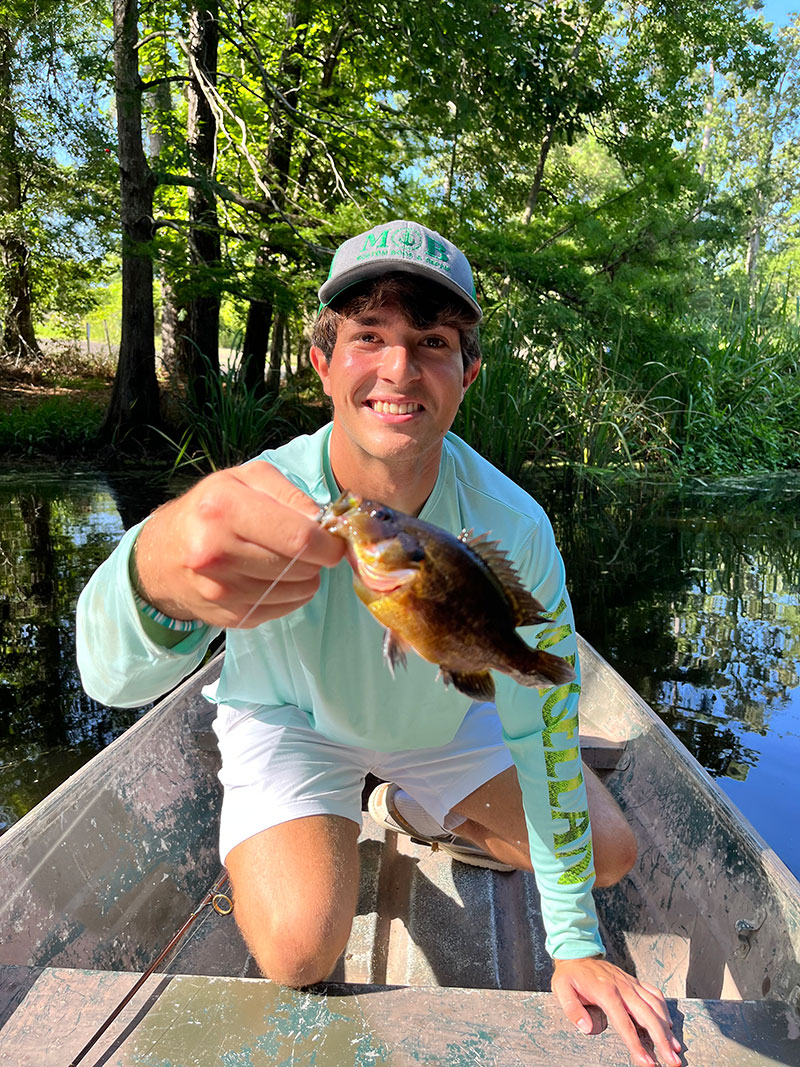 Don’t pass up these Bayou Cane gems for fun or your next fish fry
Don’t pass up these Bayou Cane gems for fun or your next fish fry
The Northshore of Lake Pontchartrain is peppered with tributaries that produce fantastic freshwater fishing.
But one waterway that is often overlooked is a shallow bayou that is primarily a destination for kayakers interested in tranquil scenery and the Native American history that the bayou claims.
Located just east of Fontainebleau Park in Mandeville, Bayou Cane stretches a little over a mile from Highway 190 to Lake Pontchartrain. The bayou is very shallow with its deepest section measuring 9 feet. However, what this bayou lacks in size it makes up for with fish. The waterway is great for catching bass and perch, but really excels when it comes to catching goggle-eye.
Spencer Ballard of Mandeville fishes Bayou Cane often and has learned to love catching and eating these fish. But that wasn’t always the case. At a young age, Ballard recalled hearing a gentleman say goggle-eye weren’t good to eat.
“It was a crawfish boil and I heard some dude say that they were garbage,” he said.
Ballard said from that moment on he never bothered to keep the fish while perch fishing because they were sub-par as table fare.
“I had them ranked right down there with gafftop catfish and the deadman inside a crab,” he said.
Wait, they taste good!
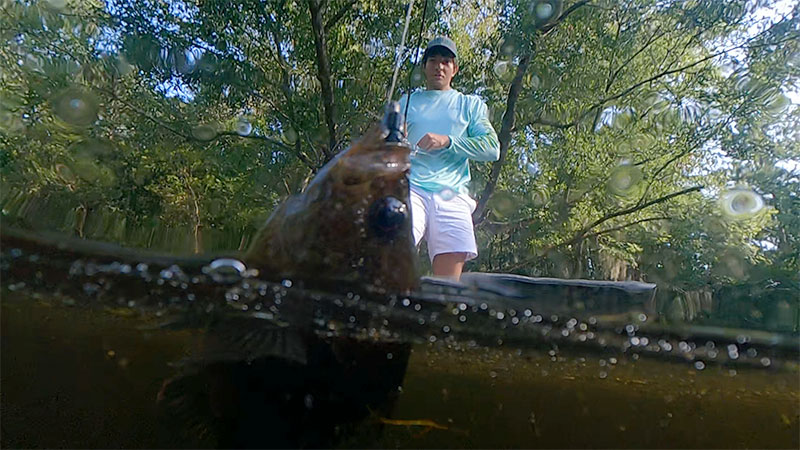
After a few years went by, Ballard was attending a fish fry at a friend’s camp when he was enlightened.
“I was chowing down hard on what I thought were fried bluegill strips,” he said.
The 21-year-old was then informed that the fillets he was eating were a fresh batch of goggle-eye that were caught the day before. From that moment on, Ballard started keeping the goggle-eye that he caught and enjoying them right along with the other bream.
“I can’t believe I was throwing these fish back all these years,” he said.
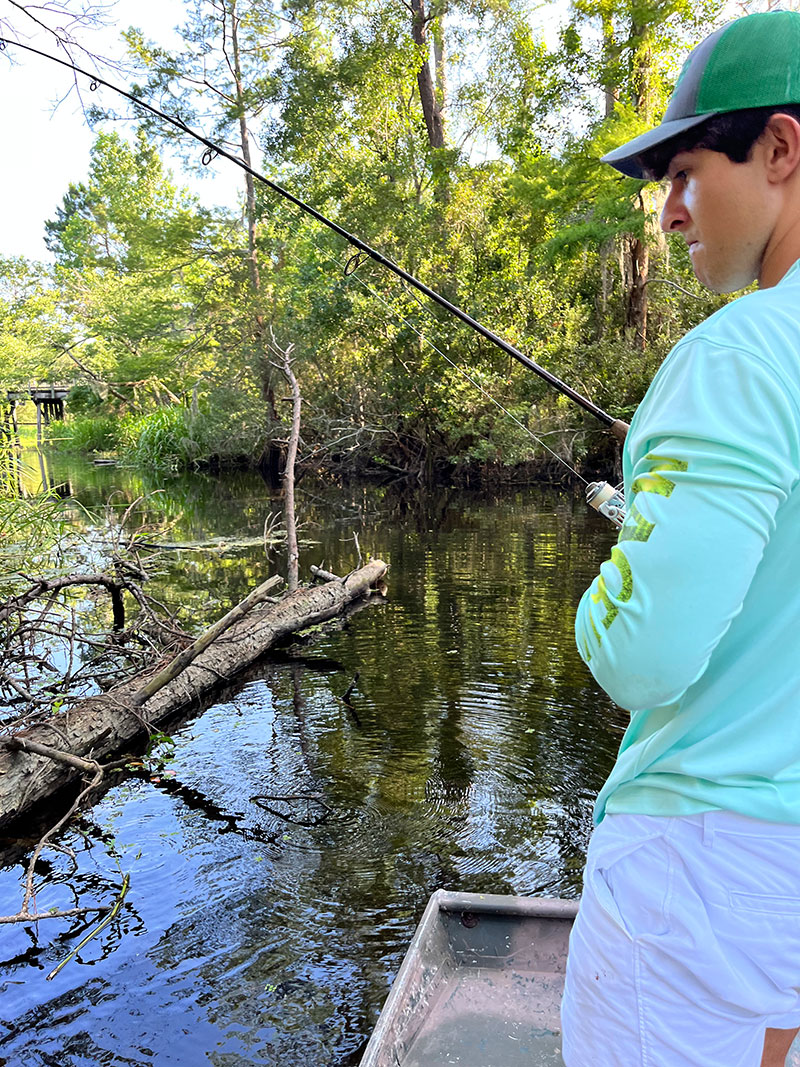
When targeting goggle-eye AKA Warmouth, Ballard resorts to a unique setup that allows him to get to the hard-to-reach spots where goggle-eye hunker down.
“I use an ultralight spinning reel on a 9-foot jigging pole,” he said.
For line, he said it really doesn’t matter since it’s not like bass fishing or crappie fishing where the thickness or color of the line matters.
“These fish just about jump on anything that you put near them and they don’t even have a chance to see the line because the lure is dropping down to them from above,” he said.
For bait, he uses a 1-inch tube jig on a 1/32-ounce head, but will use bigger jigs as the aggressive fish will inhale larger lures that are sometimes bigger than themselves. He prefers using thin wire hooks that allow him to pull his lure out of the wood when it gets hung up. The thin wire hook straightens with a little effort and he then reshapes it with his needle-nose pliers.
Choose chartreuse
While any brand jig will work for these insatiably aggressive fish, Ballard stresses that he catches twice as many goggle-eye when he has chartreuse in the lure.
“Anything chartreuse or a bright yellow — they can’t resist,” he said. “I won’t even try a lure anymore unless it has chartreuse in it.”
The bream fisherman is so insistent about using chartreuse that he’s even experimented with nightcrawlers and shiners.
“I use something called Worm-Glo for the nightcrawlers and another product called Fire Dye for the shiners,” he said.
When he uses worms, he pinches off a 2-inch piece and hooks it wacky style which allows the worm to have more action than threading it on the hook lengthwise.
Goggle-eye are primarily still-water fish, congregating in areas with little to no water flow. They are ambush predators so these fish are often hunkered down in submerged wood like root-balls, fallen tree canopies, and brush piles. Ballard said it’s easy to spot the sections of bayou where these fish are located.
“I catch 95% of my fish in dead-end canals with the majority coming from the area where the cut ends or is clogged up with grass,” Ballard said. “Alligator grass, snot grass, hyacinth, and duckweed are all good signs that there will be goggle-eye in the area.”
While Ballard concentrates on wood and vegetation, there is another key ingredient to finding these fish — shade.
“These fish are always hiding and waiting to ambush anything that swims by, so they’re going to be hiding in dark water,” he said.
As most sac-a-lait anglers know, sometimes it takes a little work to get to the fish. Goggle-eye are no different, however, these fish hold tighter to cover than other species of bream.
“Oh they’re jammed in there and won’t come out,” Ballard said.
How it’s done!
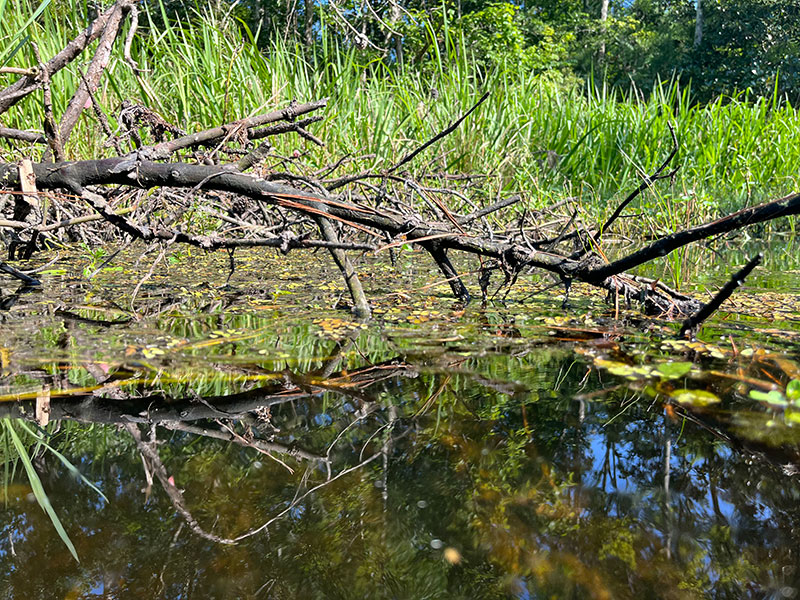
When fishing a dead-end canal, Ballard centers his flatboat in the center of the bayou and lets the boat drift slightly until it rests up against the tree branches that extend from the shoreline. It’s a stealthy method that allows him to get close enough to his target that he doesn’t have to cast.
“The trash that I fish is so thick that it’s just about impossible to cast into it without getting hung up so I drop my jig down into the tiny openings in the branches and lower it down until they smack it,” he said.
While Ballard rarely uses a cork, when he does, he uses a small sliding cork to penetrate the small openings in the structure. The sliding cork slides down to the jig head and is easier to drop down into tight openings. When using a cork, he recommends setting the hook quickly.
“I find that right when the jig and the cork hit the water goggle-eye jump on it so don’t be caught sleeping,” Ballard said. “Most of the fish I catch come within two seconds of that jig hitting the water.”
Goggle-eye tacos
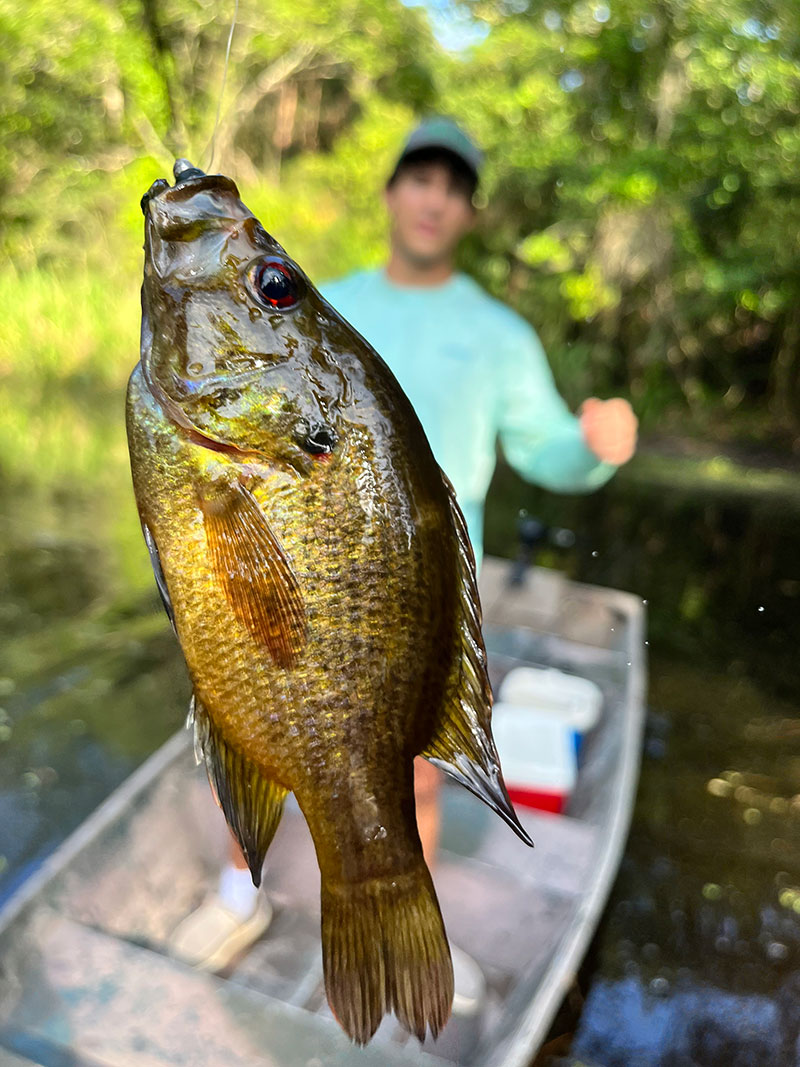
to add to the ice chest.
While frying these fish is a viable option, Ballard prefers to sear the fillets on a cast iron surface. But first, he recommends a simple step to make the fillets taste better.
“After I clean my fish I put the fillets in a ziplock bag with a cup of water and a few tablespoons of salt,” he said.
He refrigerates it overnight then empties the bag and refills it with fresh water before freezing. The salt extracts any fishy taste that the meat may contain and produces a clean, white, flaky fillet when cooked. When he’s ready to sear the fish, he simply pats the meat dry and adds some blackening seasoning to the fillets. Then he tosses them into a smoking hot cast-iron pot or on a griddle, with a couple slices of butter. After the meat is blackened, he adds them to a warm flour tortilla that’s filled with Queso cheese, cabbage, and smashed avocado. For seasoning, he adds crushed black pepper, salt, and a squeeze of lemon.
As the calendar turns from July to August, the goggle-eye bite will remain strong. Ballard said these fish will continue to be plentiful into early October when the cold fronts start rolling in. Until then he will continue to explore new tributaries but so far, he said Bayou Cane is the hotspot for goggle-eye.
